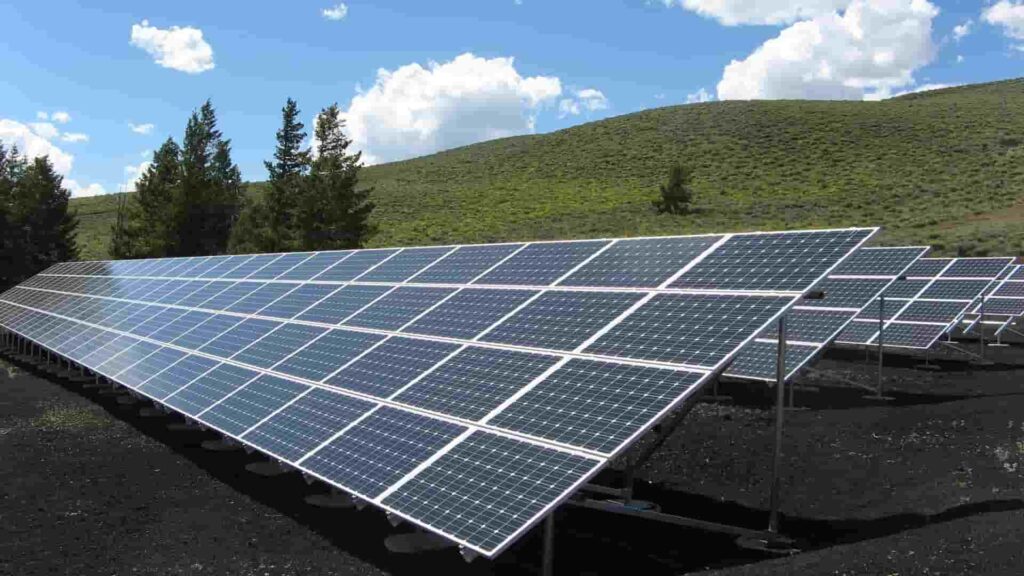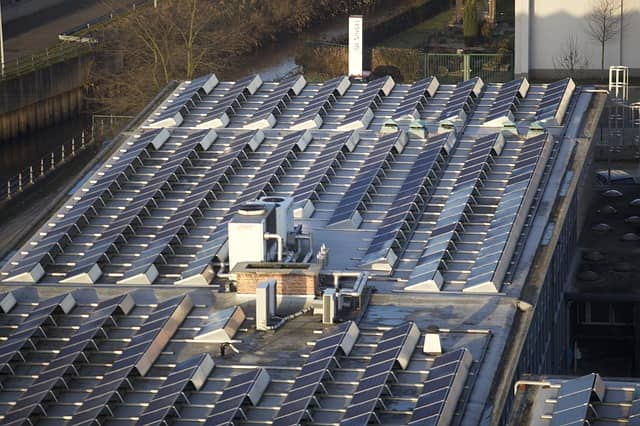Basic principles
Solar panels are made up of photovoltaic cells packed into a common frame. Each is made of a semiconductor material, such as silicon, which is most commonly used in solar panels.
When the rays hit the semiconductor, it heats up, partially absorbing their energy. The influx of energy releases electrons inside the semiconductor. An electric field is applied to the photocell, which directs the free electrons, causing them to move in a certain direction. This flow of electrons forms an electric current.
If metal contacts are attached to the top and bottom of the photocell, the resulting current can be routed through wires and used to operate various devices. The strength of the current, together with the cell voltage, determines the electrical power produced by the photocell.
Silicon semiconductors
Let us consider the process of electron release using silicon as an example. A silicon atom has 14 electrons in three shells. The first two shells are completely filled with two and eight electrons respectively. The third shell is half empty – it has only 4 electrons.
This gives silicon its crystalline form; in an attempt to fill the voids in the third shell, the silicon atoms try to “share” electrons with its neighbours. However, a pure silicon crystal is a poor conductor because almost all of its electrons are firmly seated in the crystal lattice.
That is why solar cells do not use pure silicon but crystals with small impurities, i.e. atoms of other substances are added to the silicon. That means that there is only one atom per million atoms of silicon, e.g. one atom of phosphorus.
Phosphorus has five electrons in its outer shell. Four of them form crystalline bonds with nearby silicon atoms, but the fifth electron actually remains “hanging” in space, without any bonds with neighboring atoms.
When the sun’s rays hit silicon, its electrons receive additional energy, which is enough to tear them away from their respective atoms. As a result, holes are left in their place. The freed electrons roam the crystal lattice as carriers of electric current. Having met another “hole”, they fill it.
However, in pure silicon such free electrons are too few because of the strong bonds of atoms in the crystal lattice. Silicon with an admixture of phosphorus is quite another matter. Much less energy is required to release the unbound electrons in the phosphorus atoms.
Most of these electrons become free carriers, which can be efficiently directed and used to generate electricity. The process of adding impurities to improve the chemical and physical properties of a substance is called doping.
Silicon doped with phosphorus atoms becomes an n-type electronic semiconductor (from the word ‘negative’, due to the negative charge of the electrons).
Silicon is also doped with boron, which has only three electrons in its outer shell. The result is a p-type semiconductor (for ‘positive’) which produces free positively charged ‘holes’.

Solar battery design
What happens when an n-type semiconductor is combined with a p-type semiconductor? The former will have lots of free electrons and the latter will have lots of holes. The electrons tend to fill the holes as quickly as possible, but if this happens, both semiconductors become electrically neutral.
Instead, when free electrons penetrate a p-n semiconductor, the region at the junction of both substances becomes charged, forming a barrier that is not easily crossed. At the boundary of the p-n junction, an electric field is generated.
The energy of each photon of sunlight is usually enough to release one electron, and therefore one extra hole. If this happens near the p-n junction, the electric field sends a free electron to the n side and a hole to the p side.
Thus, the equilibrium is further disturbed and if an external electric field is applied to the system, the free electrons will flow to the p-side to fill the holes, creating an electric current.
Unfortunately, silicon is quite good at reflecting light, which means that a large proportion of photons go to waste. To reduce this loss, photovoltaic cells are coated with an anti-reflective coating. Finally, to protect the solar panel from rain and wind, it is also common to cover it with glass.
The efficiency of modern solar panels is not very high. Most efficiently recycle between 12 and 18 per cent of the sunlight that hits them. The best examples have crossed the 40 per cent efficiency barrier.
